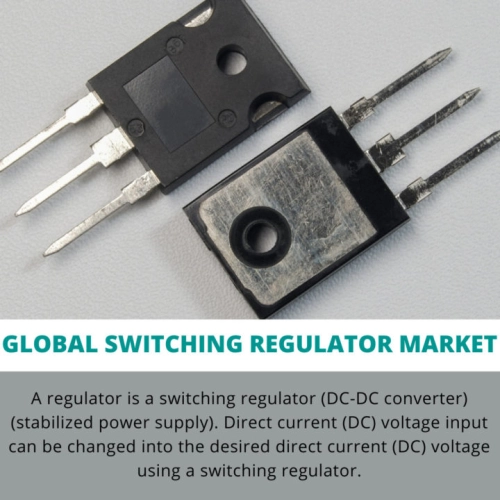
- Get in Touch with Us

Last Updated: Apr 25, 2025 | Study Period:
A regulator is a switching regulator (DC-DC converter) (stabilized power supply). Direct current (DC) voltage input can be changed into the desired direct current (DC) voltage using a switching regulator.

A switching regulator performs the task of converting the voltage from a battery or other power source to the voltages needed by following systems in an electronic or other device.An output voltage (VOUT) produced by a switching regulator can be greater (step-up, boost), lower (step-down, buck), or have a different polarity from the input voltage (VIN).
A switching regulator provides high-efficiency electricity conversion by turning a switching element ON and OFF. It does this by supplying the necessary quantity of electricity only when it is required.
Another form of regulator (stable power supply) is the linear regulator, however it is not nearly as effective as a switching regulator because it wastes any excess energy as heat during the voltage conversion between VIN and VOUT. Comparing a switching regulator to a linear regulator is the simplest approach to demonstrate how a switching regulator can efficiently convert voltage.
The Global Switching regulator market accounted for $XX Billion in 2023 and is anticipated to reach $XX Billion by 2030, registering a CAGR of XX% from 2024 to 2030.
Launch of a new power switching regulator by Texas Instruments. Recently, Texas Instruments developed the unique power switching regulator. It was created to increase the battery life of IoT devices used in both industrial and consumer settings.
The advantages of the new TPS62840 60-nA IQ include exceptionally good light-load efficiency and, thus, longer battery life when used in the design of IoT electronics. TI guarantees that the efficiency achieved is 30% higher than that of competing alternatives.
Additionally, the availability of stop functions in place of the conventional functionality of pricey sensors or precise signal-chain components can not only increase performance but also reduce overall costs. With the TPS62840, engineers may now employ smaller batteries or even reduce the number of batteries by 50%, resulting in a smaller overall solution.
| Sl no | Topic |
| 1 | Market Segmentation |
| 2 | Scope of the report |
| 3 | Abbreviations |
| 4 | Research Methodology |
| 5 | Executive Summary |
| 6 | Introduction |
| 7 | Insights from Industry stakeholders |
| 8 | Cost breakdown of Product by sub-components and average profit margin |
| 9 | Disruptive innovation in the Industry |
| 10 | Technology trends in the Industry |
| 11 | Consumer trends in the industry |
| 12 | Recent Production Milestones |
| 13 | Component Manufacturing in US, EU and China |
| 14 | COVID-19 impact on overall market |
| 15 | COVID-19 impact on Production of components |
| 16 | COVID-19 impact on Point of sale |
| 17 | Market Segmentation, Dynamics and Forecast by Geography, 2024-2030 |
| 18 | Market Segmentation, Dynamics and Forecast by Product Type, 2024-2030 |
| 19 | Market Segmentation, Dynamics and Forecast by Application, 2024-2030 |
| 20 | Market Segmentation, Dynamics and Forecast by End use, 2024-2030 |
| 21 | Product installation rate by OEM, 2023 |
| 22 | Incline/Decline in Average B-2-B selling price in past 5 years |
| 23 | Competition from substitute products |
| 24 | Gross margin and average profitability of suppliers |
| 25 | New product development in past 12 months |
| 26 | M&A in past 12 months |
| 27 | Growth strategy of leading players |
| 28 | Market share of vendors, 2023 |
| 29 | Company Profiles |
| 30 | Unmet needs and opportunity for new suppliers |
| 31 | Conclusion |
| 32 | Appendix |